We know a lot about the Newman Brothers, but not so much about the Newman Sisters, and there were four of them. Thanks to census data and a bit of newspaper research, their legacy is not lost and in honour of International Women’s Day we’re highlighting their stories this March. And we promise to keep them alive going forward.
Alfred Newman and Eliza Ginder had seven children, four girls and three boys. We know two of those children well: Alfred and Edwin who established Newman Brothers in 1894. And yet we’ve never really paid enough attention to the women in the family, especially given that one of them worked at the Newman Brothers’ Manufactory. Yes, that’s right, there was a sister who worked at the Manufactory: Amy Newman, the youngest of the sisters and siblings, born in 1868. This blog will very much focus on Amy and her role at the Fleet Street Works.
Amy Newman: the youngest Newman
Amy worked at Newman Brothers from at least 1901 when we can see her occupation clearly in census data. She was 33 years old and living in the family home at 62 Tenby Street North. Her mother and father, who once also lived there both died in 1898. On the 1901 census under ‘relation to head of the household’ it says: ‘Sister’ and her occupation is recorded ’Coffin Furniture Manageress’.
Amy was living with her brother, Alfred Newman at this point, and he is recorded as ‘Head of the Household’. He and Edwin had dissolved their partnership in 1895 and Edwin is now living at 20 Clarence Road, Sparkbrook. His listed occupation was ‘Commission Agent’.
On the 1891 census Amy’s occupation was recorded as a ‘Teacher of Music’, so sometime between that census and the 1901 census she had joined Newman Brothers as a manager.
We get a little more idea of Amy’s progression in the business from the 1911 Census, as Amy is once again recorded as a ‘Manageress’ but now it states ‘Shrouds, Coffin Furniture’. Amy is still recorded as the ‘sister’ in relation to the Head of the Household, but this time it’s not referring to Alfred, but rather her sister, Maria. We’ll come on to Maria shortly, but we can see from the 1921 Census that Amy is living with two of her sisters: Maria born in 1856 and Eliza born in 1861. They were no longer living in the city centre, but had moved out to Wylde Green in Sutton Coldfield. Their house, on Station Road was known as ‘The Uplands’.
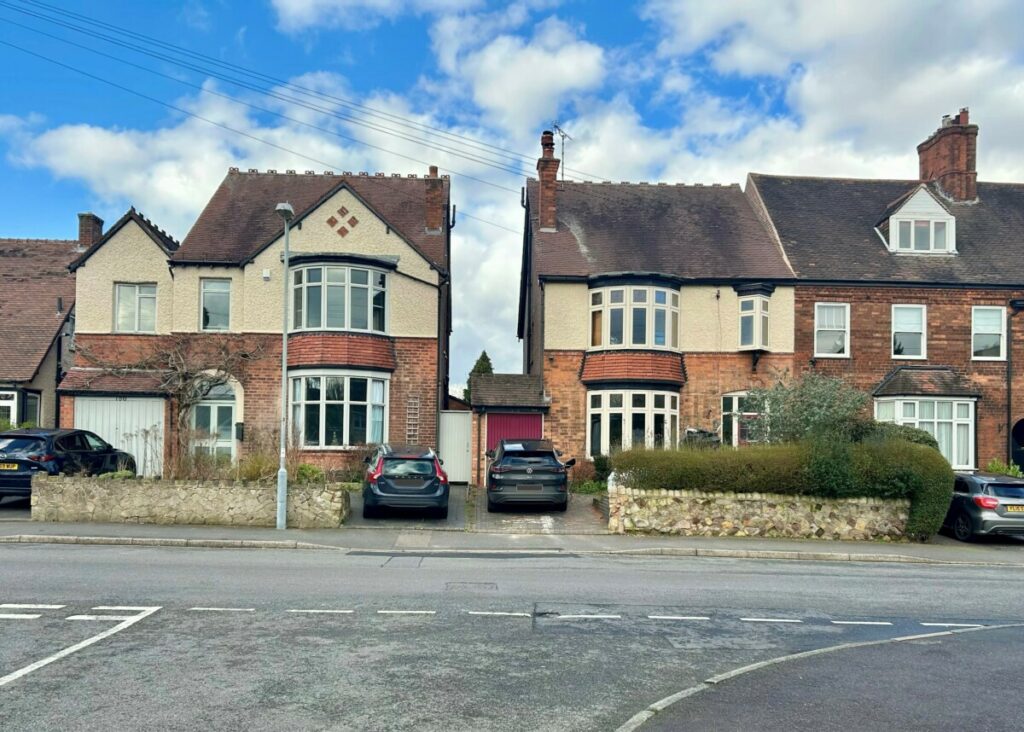
So, it would appear that Amy was in charge of the Sewing Room at Newman Brothers from at least 1911. But how can we be sure it was Newman Brothers? There’s every possibility that she could have worked for another business, but odds are she wasn’t, especially given the next bit of evidence.
Skip forward to 1921 and we get concrete proof that Amy was working at Newman Brothers, where this time she is recorded as a ‘General Clerk’ and her employer listed as ‘Newman Brothers’. She was now seemingly playing her part in running the office. She was 53 years old.
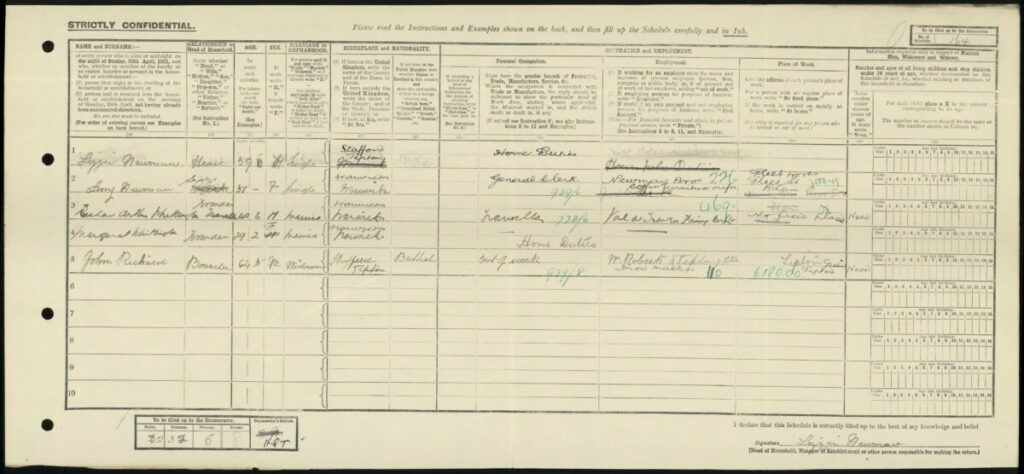
Amy died just six years later in 1927 at the age of 58. She left £330 in her will and her brother Alfred, was her executor. Just three months later, the Uplands was listed for sale by auction.
We think Amy features in the 1912 factory photo and is most likely standing in the back row, first on the left.
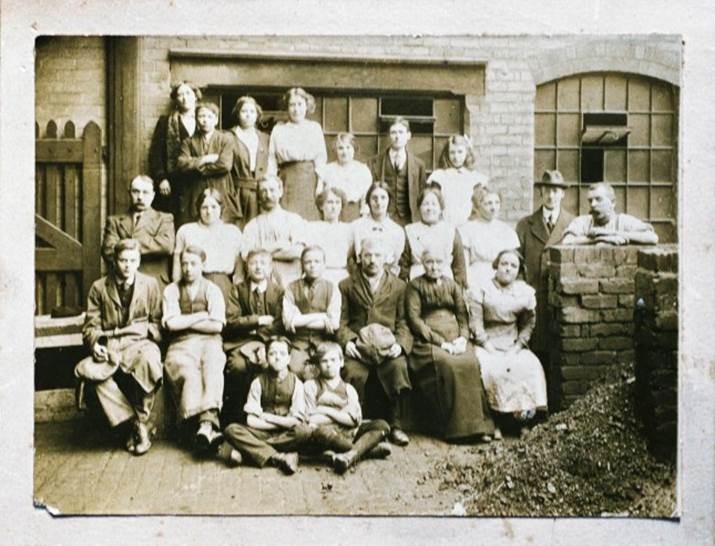
Maria Newman: Lady Matron at Curzon Street
Maria Newman, who was head of the household at the Uplands in Wylde Green was the oldest of the unmarried sisters, born in 1856. From census data we can see that she was a commercial clerk at Curzon Street Railway between at least 1881 and 1911. However, thanks to a fortuitous railway record, we can pinpoint the exact date she joined the ‘Curzon Street Lady Clerks’ and that was in March 1876, aged 20. Her annual rate of pay is also recorded.
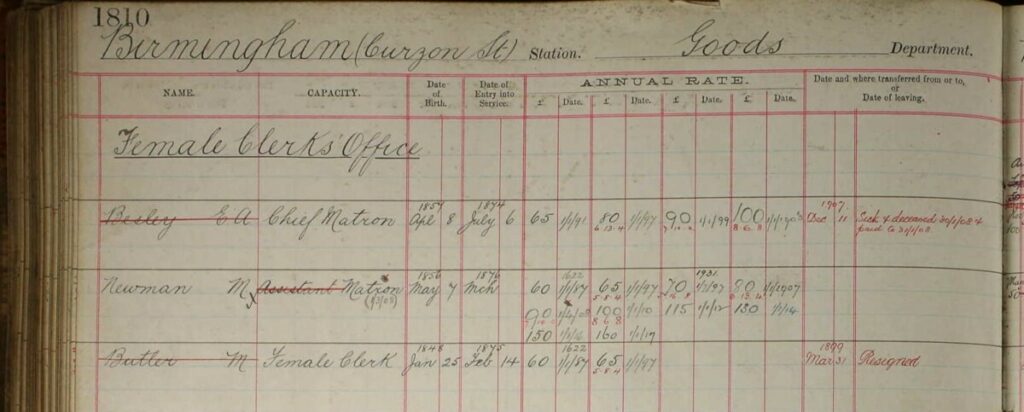
In undertaking this research we discovered the photo below which shows female clerks at Curzon street in the 1890s. Maria most likely features in this photo, but as is the running theme with the Newman family, we once again can’t identify her for sure.
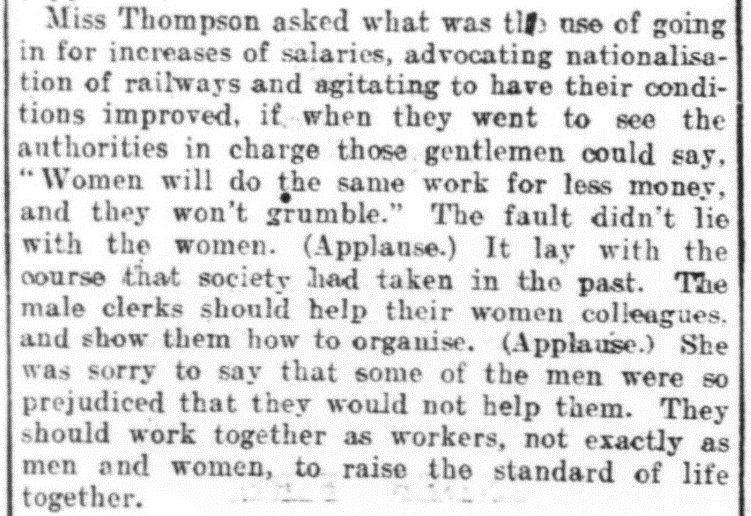
As a ‘lady clerk’ Maria and her female colleagues were paid a lower rate than their male counterparts for no other reason other than their gender. An article from the Birmingham Daily Post from May 1915 perfectly sums up the fight for equality and for equal pay in this industry. It mentions that a ‘Miss Thompson’, who was the only female delegate to attend the annual conference of the Railway Clerks’ Association in Dublin, called for her male colleagues to ‘work together as workers, not exactly as men and women, to raise the standard of life together’. She also said that she was ‘sorry to say that some of the men were so prejudiced that they would not help’. She received a round of applause on multiple occasions as she spoke and we too today applaud her for having the courage to take a stand on an international stage. That couldn’t have been easy and thanks to efforts like hers, it has paved the way to change.
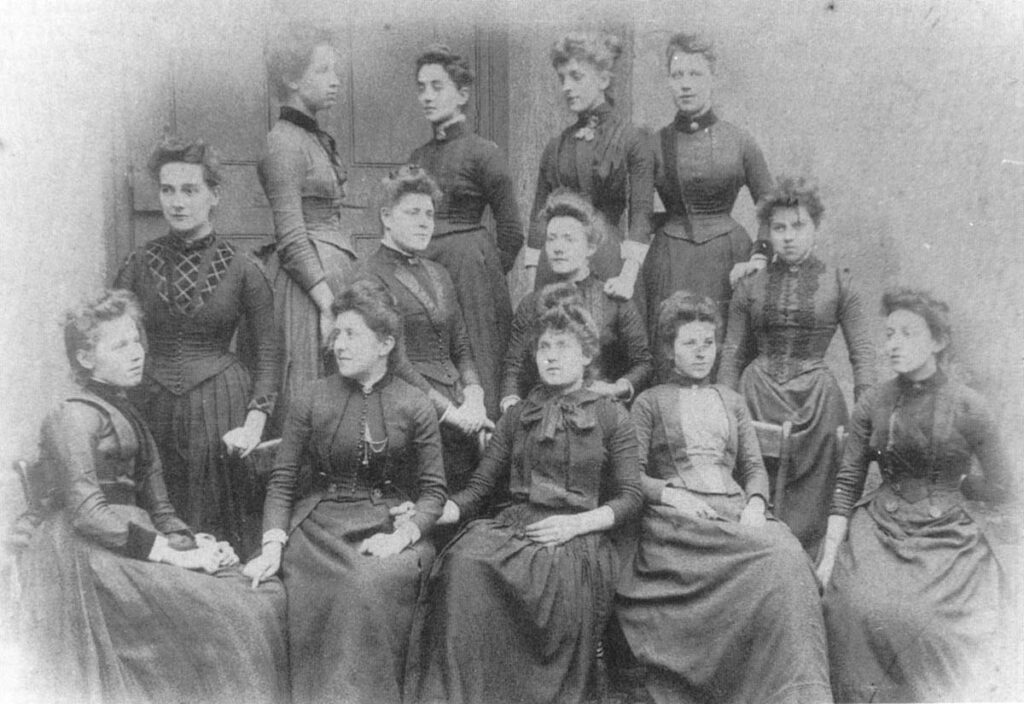
When she died in 1920, she was 64 years old and left £937. 3s. 10d in her will. Her sister Eliza or ‘Lizzie’, as she was known, was her executor.
The oldest sister: Clara Newman
Clara, born in 1852 was second oldest sibling after Arthur Newman and the only sister to marry. She married Arthur Whittington in 1875 and had 10 children in fifteen years. This is the start of the Whittington connection to Newman Brothers. We know in later years that they became important shareholders in the business and it would appear that the connection starts with Clara.
In fact, there is a strong line of shareholding that carries down Clara’s line, split between her children and grandchildren.
Her sons, Percy and Harry both appear to have acquired shares in the business from 1945, so perhaps they bought George Newman’s (their cousin) shares after he died in 1944. Harry’s son, Eric and his daughter Edith also acquired shares in the business from around 1953, seemingly after their father died.
Clara died in 1934 at the age of 81. She was also living in Sutton Coldfield.
Lizzie: the longest-lived sister
Eliza, or ‘Lizzie’ as she was better known, was named after her mother. After Maria and Amy died, that left ‘Lizzie’ in the Uplands by herself, which is seemingly why the house was sold. Throughout all census data, Lizzie’s occupation is either recorded as ‘domestic duties’ or left blank, so she ran the house by herself while her sisters worked in the city centre. The next time we find mention of her is in 1939 when she is living with her niece, Maud, (daughter of Clara) and Maud’s husband, Francis Timmins, in Redacre Road Sutton Coldfield. Her occupation was once again recorded as ‘Domestic duties’, but this time she had Maud to help her. Lizzie lived to the grand old age of 89. She died in 1950 in Sutton Coldfield.
So much has been focussed on following the families of Alfred and Edwin, which has led us to good fortune, but following paternal lines is only part of finding a whole story. This is a lesson in not forgetting the most obvious – women’s surnames often change, but their family stories don’t and let’s not forget that following maternal lines is also key to discovering our past. If we follow just our own family name, we’re following just one surname when we are made up of multiple names with multiple clues. So, in honour of International Women’s Day, let’s pay respect to the importance of knowing all of ourselves and digging that little bit deeper to find a richer story and remember to embrace your maternal line, not just today, but every day.
Special thanks to Suzanne Hayes for her research and Tom Parry for aptly adapting our Newman Brothers’ print to Newman Sisters for the purpose of this blog. Happy International Women’s Day!
Sarah Hayes – Museum & Trust Director

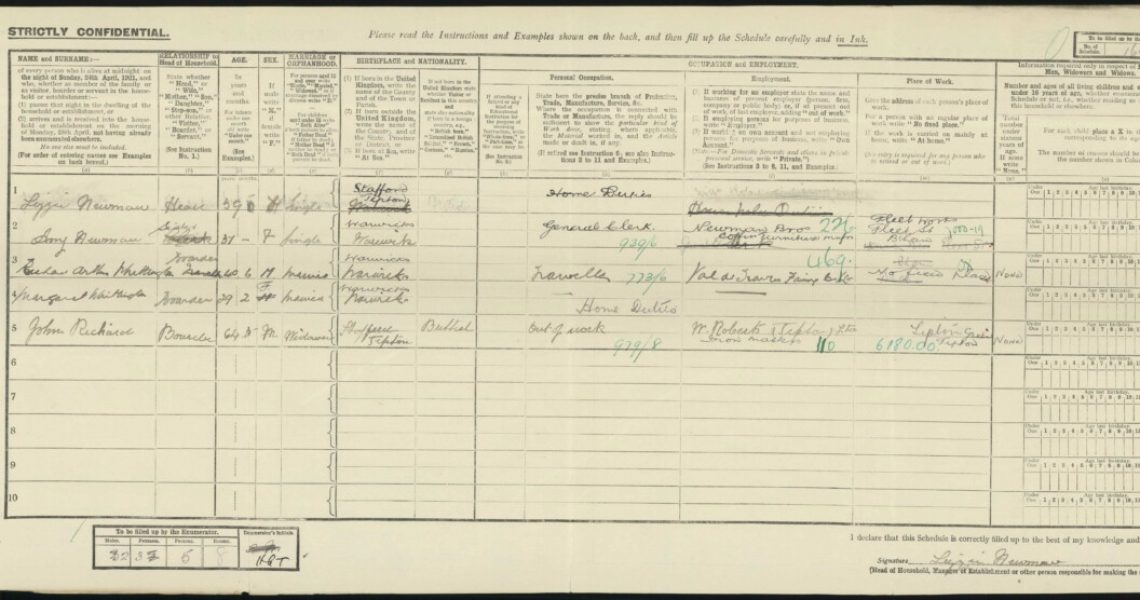








2 Responses
I completed an MA in Railway History, with Distinction, at York University a few years ago. The subject I studied was the First Railway Clerks. This included Maria Newman, who was among the first tranche of w men recruited to be Clerks by the London and North Western Railway, At the request of my Supervisor, Dr David Turner, now at Aston University, I am revisiting my research to prepare information for the Rail 200 Birmingham celebration/exhibition.
Maria’s Mother has 2 different surnames in the literature – Gender and Ginder. Perhaps this would benefit from confirming, as both names are in the pubic domain. I did not research this aspect for my MA.
Hello Rosalind. So sorry for our late reply. As far as we know, the surname should be ‘Ginder’. Please feel free to email sarah@coffinworks.org to get in touch directly about this or to explore other questions. Many thanks! Sarah